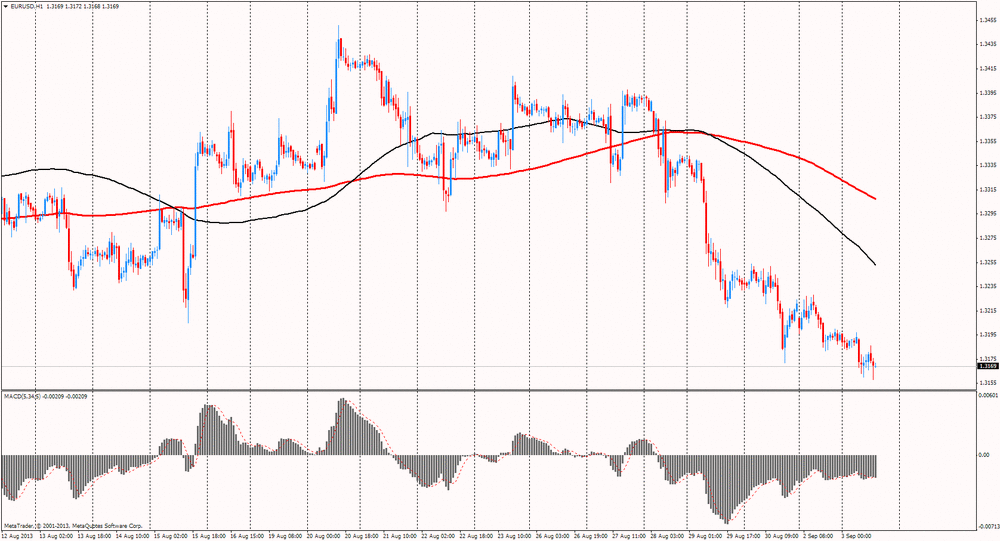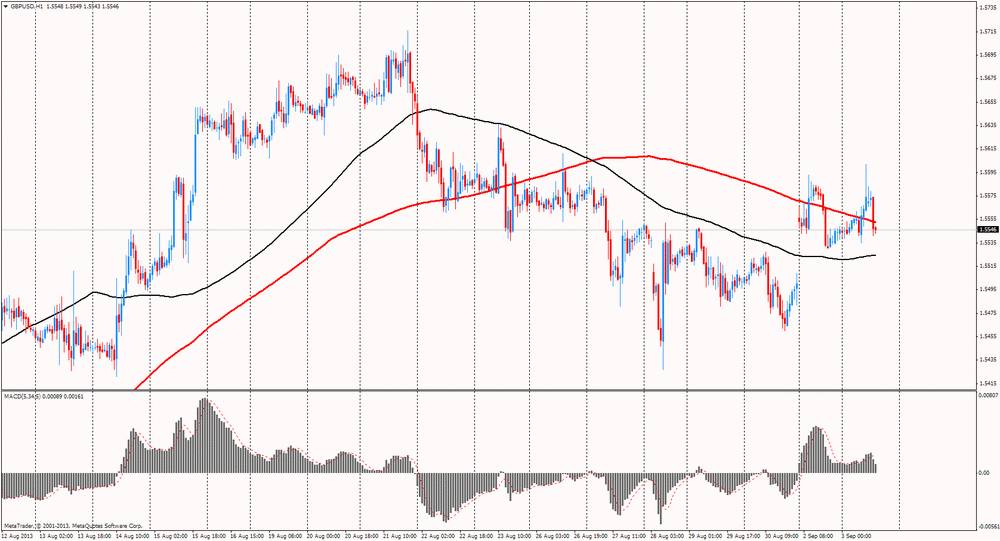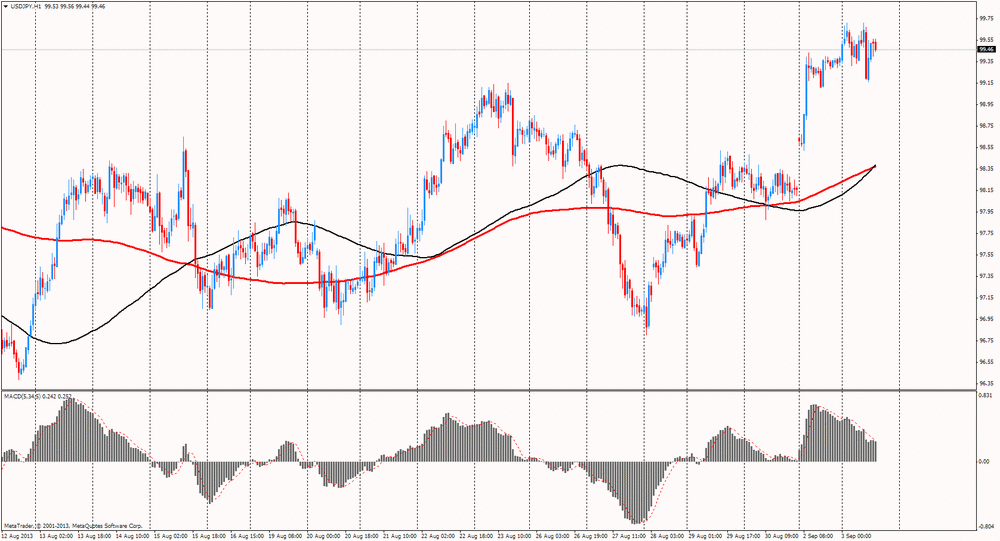- European session: the dollar rose against the euro
Noticias del mercado
European session: the dollar rose against the euro
Data
01:00 China Non-Manufacturing PMI August 54.1 53.9
01:30 Australia Retail sales (MoM) July 0.0% +0.4% +0.1%
01:30 Australia Retail Sales Y/Y July +1.1% +1.9%
01:30 Australia Current Account, bln Quarter II -8.5 -8.3 -9.4
01:30 Japan Labor Cash Earnings, YoY July +0.1% +0.8% +0.4%
04:30 Australia Announcement of the RBA decision on the discount rate 2.50% 2.50% 2.50%
04:30 Australia RBA Rate Statement
05:45 Switzerland Gross Domestic Product (QoQ) Quarter II +0.6% +0.3% +0.5%
05:45 Switzerland Gross Domestic Product (YoY) Quarter II +1.1% +1.7% +2.5%
08:30 United Kingdom PMI Construction August 57.0 58.4 59.1
09:00 Eurozone Producer Price Index, MoM July 0.0% +0.2% +0.3%
09:00 Eurozone Producer Price Index (YoY) July +0.3% +0.1% +0.2%
The dollar rose sharply against the euro , reaching maximum values at the same session , despite attempts to reduce the rate of market participants . Note that the expectation of currency appreciation is due out U.S. data on the production index
Meanwhile, we add that little support Eurocurrency had a report on the euro area, which showed that the producer price index for the industrial sector , with the exception of construction, rose in July by 0.2 percent year on year, which followed a 0.3 percent increase in June. Note that many economists forecast growth of 0.1 percent.
In addition, it was reported that the producer price index for intermediate goods fell in July by 0.5 percent in annual terms . In the energy sector , prices were down 0.6 percent. The cost of the capital goods industry , meanwhile, increased by 0.5 percent. We also add that the prices of durable consumer goods rose by 0.6 percent, while the value of non-durable goods industries rose by 2.2 percent compared with a year earlier. On a monthly basis , the overall producer price index rose 0.3 percent after remained unchanged in June. It is estimated that growth would be 0.1 percent.
The pound fell against the dollar, losing all previously earned positions on expectations of the publication of data on the U.S.. Add that earlier in the trading data on the index of business activity in the construction sector had a significant support British currency .
As the results of studies that have been conducted Chartered Institute of Purchasing and supply , as well as Markit Economics, business activity in the construction sector rose unexpectedly in August, which was supported by the improvement in output and new orders.
According to reports, the purchasing managers' index for the construction sector rose last month to the level of 59.1 from 57 in July , while the projected slight decline , namely to 58.4 .
In addition, it was reported that among the three areas of activity in the sector , housing shows the best results - construction output grew at the fastest pace since June 2010 . The data also indicated a sharp increase in civil engineering activities and an increase in commercial construction the highest rate since May 2012 . The volume of new orders , meanwhile, rose at the fastest pace since March 2012 . A higher level of new orders helped construction companies remain confident in the future of business in their units for the year ahead .
The Australian dollar rose against the U.S. dollar after the rate decision and the statement by the RBA . As it became known , the Reserve Bank of Australia kept its benchmark interest rate at a record low - 2.5 %% , as weak retail sales data were reminded that the country is going through a difficult end of a long boom in the mining industry. According to the bank , to boost the economy of the country will require longer maintain the low rate, as slowing growth in China have a negative impact on the value of commodities and does not stimulate the flow of investment in the mining industry .
Since November 2011 the central bank eight times to cut interest rates , trying to smooth the transition to an economy less dependent on the mining sector, and to prevent excessive growth of unemployment.
"Over the past year, Australia's economy grew slightly slower trend - the manager said RBA Governor Glenn Stevens , commenting on the decision of the bank. - In the short term, this will continue until the economy will adapt to the smaller volume of investments in the mining industry ."
EUR / USD: during the European session, the pair fell to $ 1.3160
GBP / USD: during the European session, the pair rose to $ 1.5602 , but then fell to $ 1.5540
USD / JPY: during the European session, the pair fell to Y99.15, but then rose to Y99.55
At 14:00 GMT the U.S. ISM manufacturing index will be released in August. At 23:30 GMT Australia will present the index of activity in the service sector of the AiG in August.


